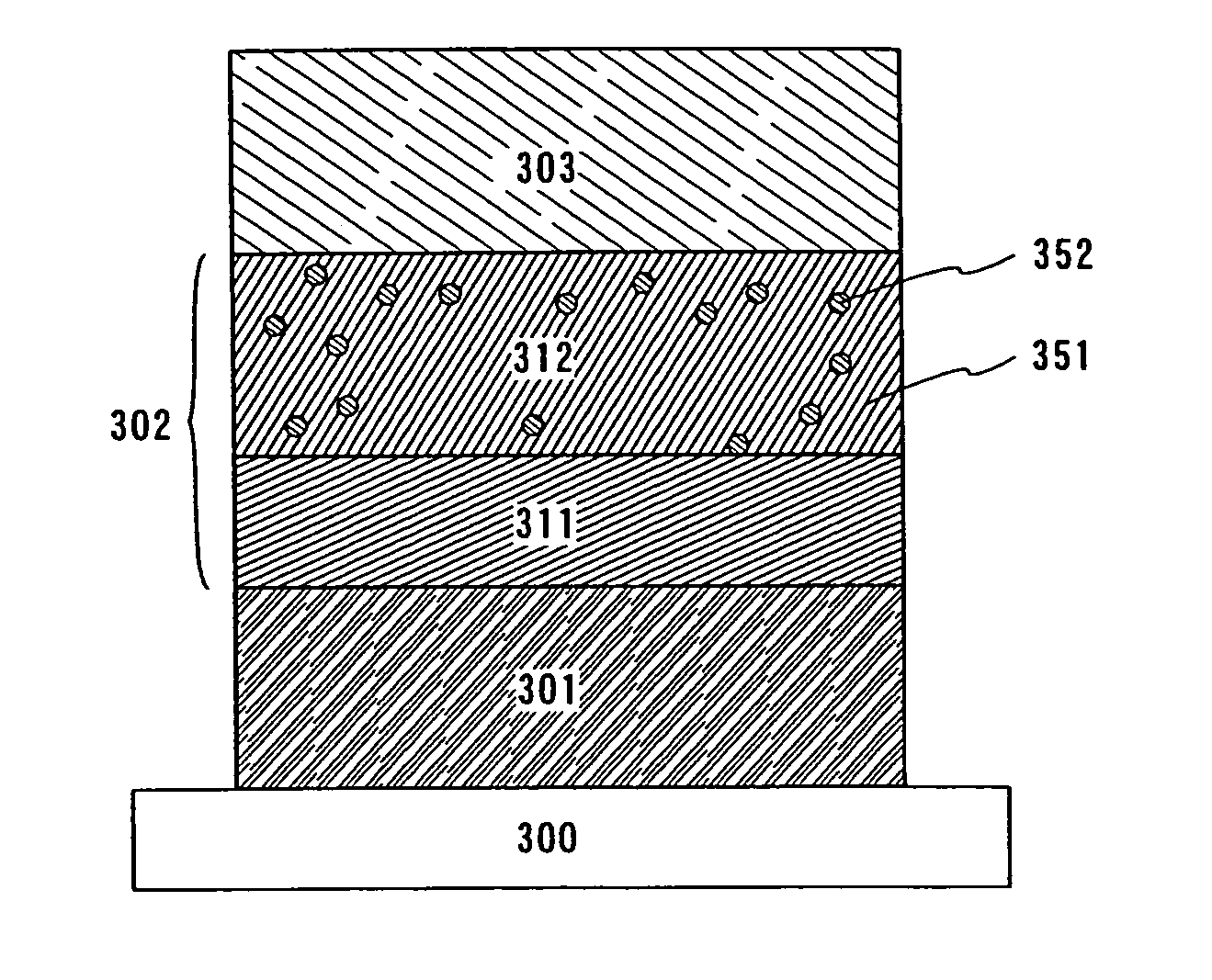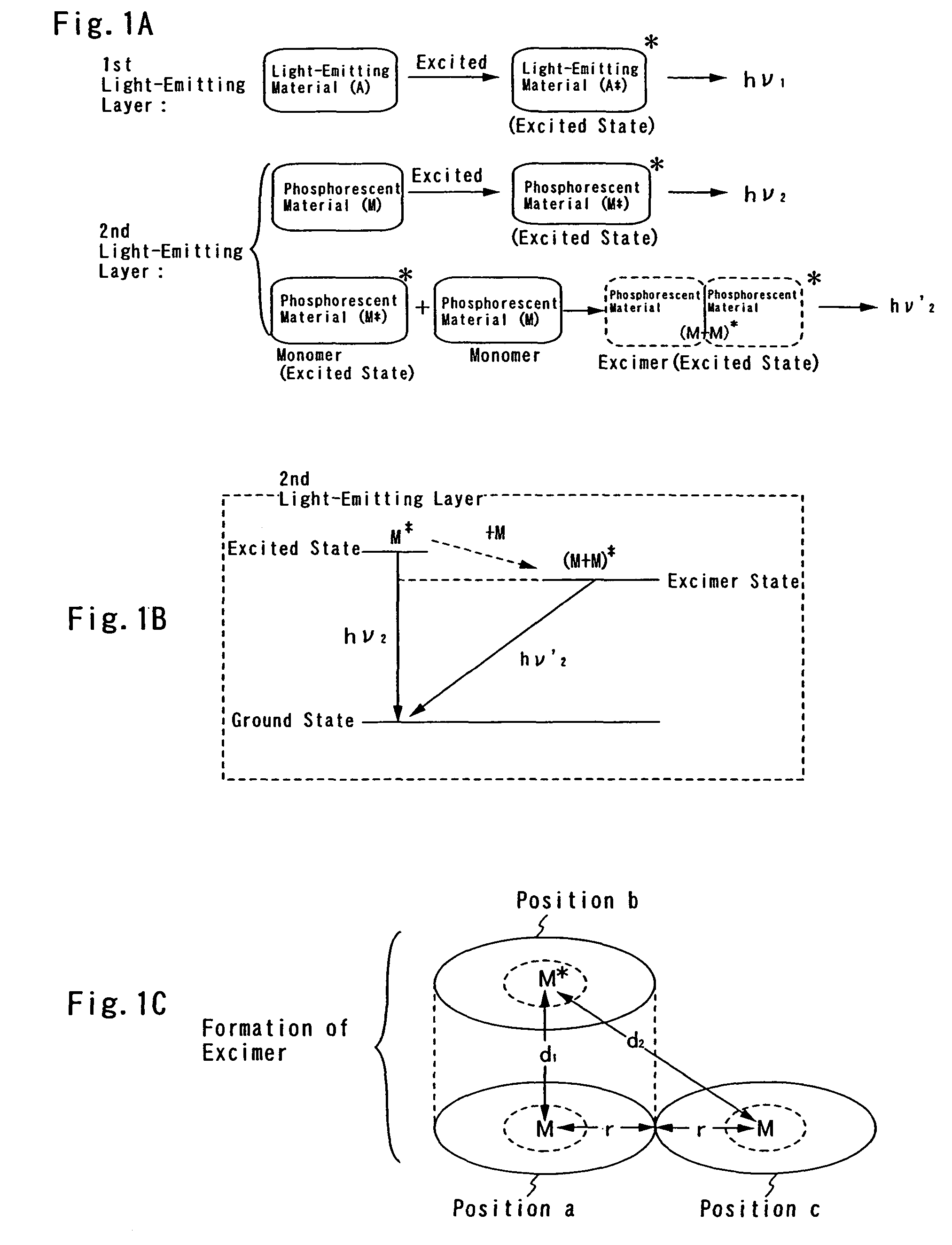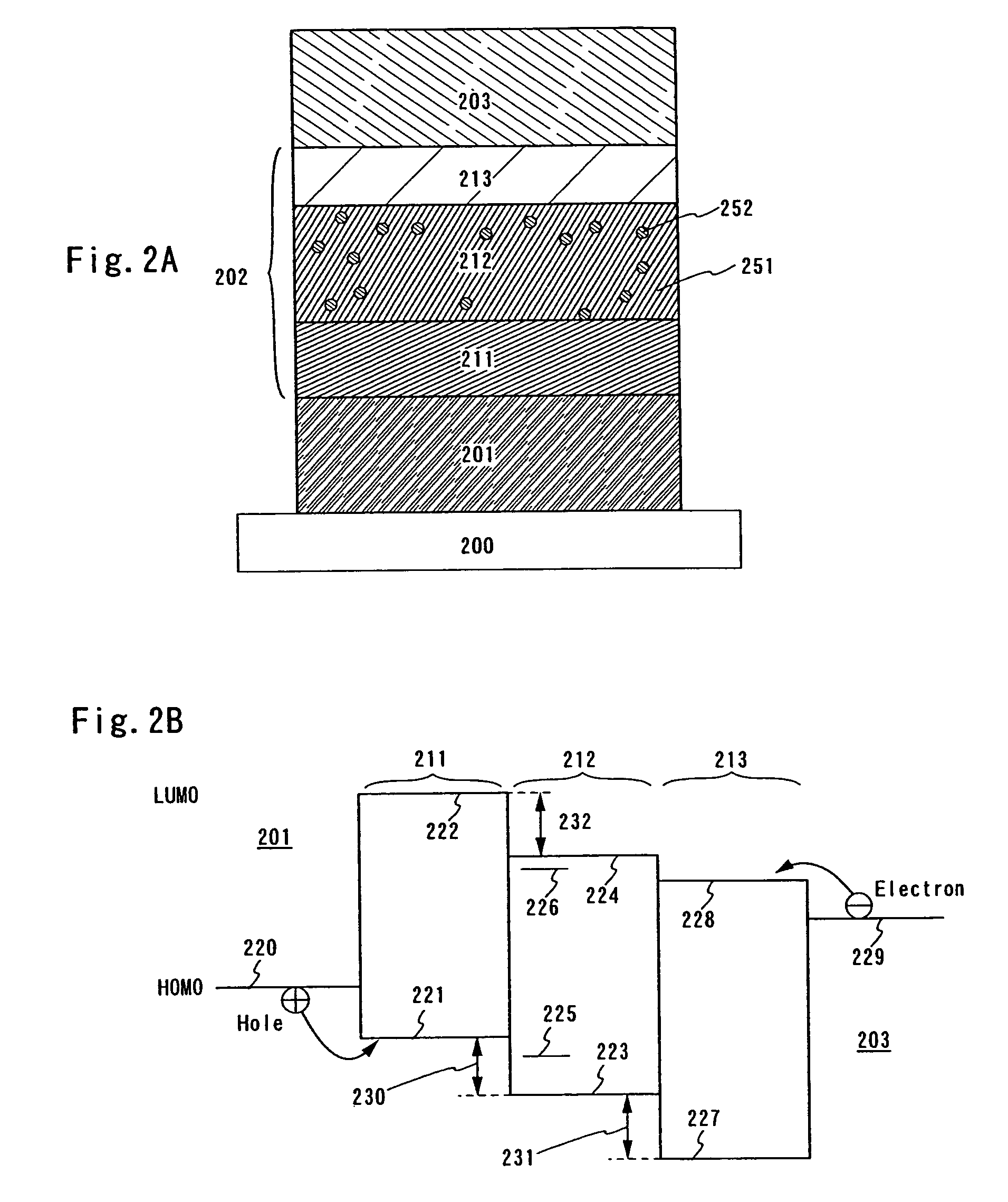Electroluminescent element and light-emitting device
a technology of light-emitting device and electroluminescent element, which is applied in the direction of discharge tube luminescnet screen, natural mineral layered products, transportation and packaging, etc., can solve the problems of difficult control of white balance, poor color conversion efficiency of blue to red, and deterioration of contrast from light emission in pixels, etc., to achieve easy control
- Summary
- Abstract
- Description
- Claims
- Application Information
AI Technical Summary
Benefits of technology
Problems solved by technology
Method used
Image
Examples
embodiment 1
[0049]In Embodiment 1, as shown in FIG. 2A, the case that a first electrode 201, an electroluminescent layer 202, and a second electrode 203 are formed over a substrate 200, and that the electroluminescent layer 202 has a lamination structure comprising a first light-emitting layer 211, a second light-emitting layer 212, and an electron transporting layer 213 will be explained. In addition, the first light-emitting layer 211 includes a light-emitting body. The second light-emitting layer 212 comprises host materials 251 and phosphorescent materials 252 which serve as a light-emitting body. The phosphorescent materials can generate both phosphorescent emission and excimer emission.
[0050]As a light-emitting body (light-emitting material) for the first light-emitting layer 211, blue fluorescent materials having hole transportation properties such as N,N′-bis(3-methylphenyl)-N,N′-diphenyl-1,1′-biphenyl-4,4′-diamine (abbreviated TPD) or derivatives thereof such as 4,4′-bis[N-(1-naphthyl)...
embodiment 2
[0064]In Embodiment 2, the case that a first electrode 301, an electroluminescent layer 302, and a second electrode 303 are formed over a substrate 300, and the electroluminescent layer 302 has a lamination structure comprising a first light-emitting layer 311 and a second light-emitting layer 312 will be explained with reference to FIG. 3A. In addition, second light-emitting layer 312 comprises host materials 351 and phosphorescent materials 352. The phosphorescent materials can generate phosphorescent emission and excimer emission.
[0065]Embodiment 2 is distinguished from Embodiment 1 by the fact that the electroluminescent layer does not comprise the electron transporting layer, and so Embodiment 2 has an advantage that the process for forming the electron transporting layer can be omitted. In addition, materials having excellent electron transportation properties are preferably used as host materials 321 for the second light-emitting layer 312 in order to keep luminous efficiency...
embodiment 3
[0070]In Embodiment 3, the case that a first electrode 401, an electroluminescent layer 402, and a second electrode 403 are formed over a substrate 400, and that the electroluminescent layer 402 has a lamination structure comprising a hole injecting layer 411, a first light-emitting layer 412, and a second light-emitting layer 413, and an electron transporting layer 414 will be explained with reference to FIG. 4A. In addition, second light-emitting layer 413 comprises host materials 451 and phosphorescent materials 452 that serve as a light-emitting body. The phosphorescent materials can generate phosphorescent emission and excimer emission.
[0071]As materials for the hole injecting layer 411, besides the above described hole transporting materials such as TPD, α-NPD, TDATA, or MTDATA, the following hole transporting materials can be used.
[0072]As hole injection materials, porphyrin compounds are useful among other organic compounds such as phthalocyanine (abbreviated H2-Pc), copper ...
PUM
| Property | Measurement | Unit |
|---|---|---|
| Fraction | aaaaa | aaaaa |
| Thickness | aaaaa | aaaaa |
| Thickness | aaaaa | aaaaa |
Abstract
Description
Claims
Application Information
 Login to View More
Login to View More - R&D
- Intellectual Property
- Life Sciences
- Materials
- Tech Scout
- Unparalleled Data Quality
- Higher Quality Content
- 60% Fewer Hallucinations
Browse by: Latest US Patents, China's latest patents, Technical Efficacy Thesaurus, Application Domain, Technology Topic, Popular Technical Reports.
© 2025 PatSnap. All rights reserved.Legal|Privacy policy|Modern Slavery Act Transparency Statement|Sitemap|About US| Contact US: help@patsnap.com



